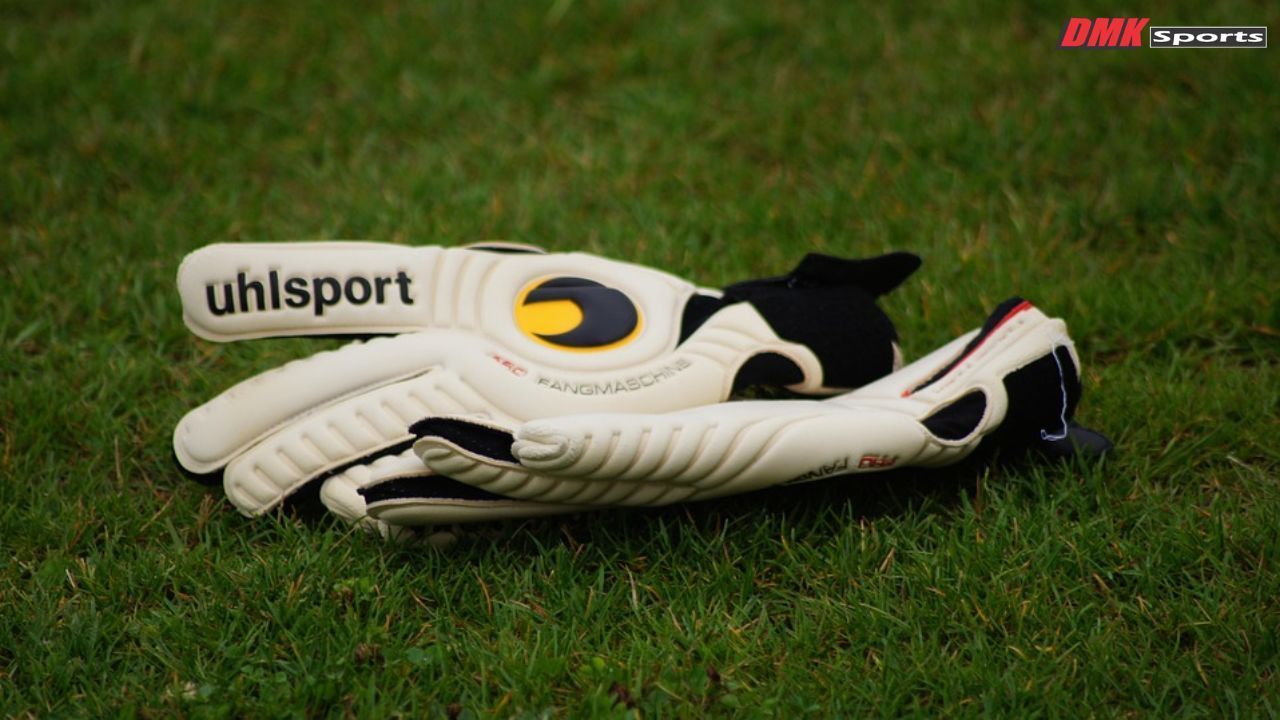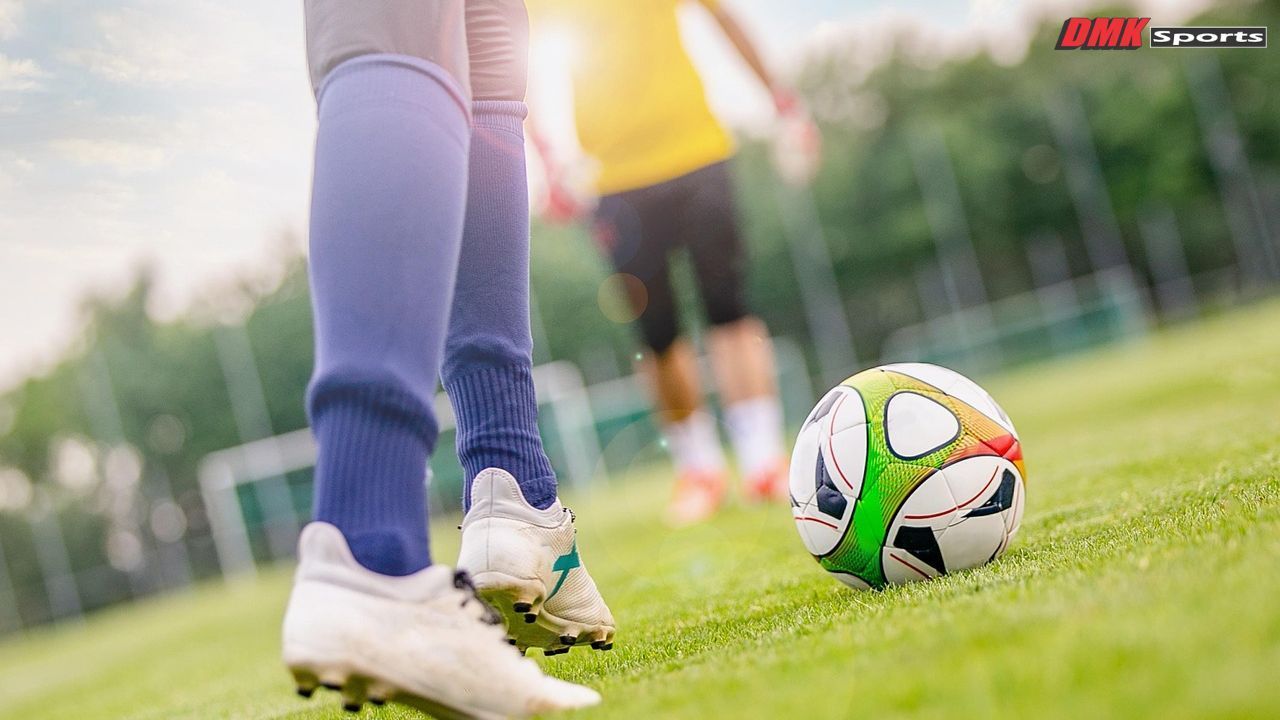Breaking In Soccer Cleats Fast: 7 Methods That Actually Work

In a soccer match last night, one of the fan favorites wore brand-new boots right out of the box. It was a gorgeous pair, a complete head turner. But the entire show was only till the match began. By full time, the player was half a yard slow. Every twist and turn made him groan with pain.
This scenario isn’t new for soccer players. New cleats feel like a big upgrade. It's only when blisters bite do you realize the pain that comes with them. It may take time to break in your cleats, but it’s a vital step to making sure that you play your best in comfort.
In this guide, we’ll tell you the steps you can use to breaking in cleats fast. Then, you can choose the top-quality cleats at DMK Sports, with no fear of pain and ache.
1. Wear Your Cleats at Home First
Wear your cleats for an hour daily. Walk around in them in different rooms of your house. Ensure to wear the same socks that you would on the match day. Some players take this up a notch and start running wearing their cleats. But that is the wrong approach. Running causes more friction than walking. It doesn't allow the material to soften and fit to your feet. Walking allows your feet to adjust to the shape of the cleats. Don’t walk outside the house on the pavement. This can damage the studs.
2. Use Thick Socks to Stretch the Material
Wearing thick or multiple pairs of socks while playing at home can help break in cleats quickly. The extra padding puts pressure on the cleats and stretches tight areas. Move around, jump lightly, and flex your feet to target all pressure points. This approach is especially helpful for synthetic cleats that can feel stiff initially.
3. Apply Leather Conditioner for Leather Cleats
For leather cleats, applying a high-quality leather conditioner softens the material effectively. Use a small amount, rubbing it into the leather using a soft cloth. Focus on areas that pinch, like the toe box and sides. After application, wear the cleats with thick socks to let the conditioner work overnight. This process can significantly reduce stiffness in kangaroo leather cleats.
4. Warm Them Up Slightly Before Wearing
Warmth makes the cleats adapt to your feet. You can use a hairdryer to break in cleats. Start by putting on a pair of thick socks. Then, wear your cleats. Turn on the hairdryer on a high heat setting. Heat up each boot for 5 minutes.
Don’t hold the hairdryer’s nozzle over a single area for an extended period. Move it around the surface for even heat distribution. When the cleat is heated, keep wearing it for 10 more minutes. This will allow it to keep stretching.
5. Use a Shoe Stretcher for Targeted Pressure
A shoe stretcher is a practical tool to soften soccer cleats in stubborn areas. Insert it into your cleat and adjust to create pressure where needed. Leave it in for a few hours or overnight. This method allows you to focus on the toe box, arch, or sides without stretching the entire cleat unnecessarily.
6. Practice Light Drills in Your Cleats
Before full games, wear your new cleats during light drills and training sessions. Start with slow jogging, passing, and controlled movements. Avoid sprinting or aggressive tackling at first. Gradually increase intensity as the cleats conform to your feet. This method helps you break in cleats fast while preventing blisters and discomfort during actual matches.
7. Dampen Your Cleats and Socks With Water
Another way to stretch those cleats is by dampening them. Dampen both the cleats and socks with water. This makes them stretch when they dry.
Take a spray bottle and fill it with water. Alternatively, you can pour the water directly onto the socks and cleats. Ensure that both items are nicely damp. Then, put them on for 30 minutes to an hour. While the cleats are drying, mold then to your feet.
You can do football warmups while they are drying. A great tip here is to put vaseline on areas you think are prone to blisters.
Tips for Different Cleat Materials

- Leather Cleats: Softer naturally and easier to mold. Use leather conditioner and gentle stretching for best results.
- Synthetic Cleats: Tend to be firmer and require gradual wearing and sock stretching. Avoid heat directly as it may warp material.
- Kangaroo Leather vs Synthetic: Kangaroo leather offers superior flexibility and touch, while synthetic provides durability and lighter weight. Both benefit from gradual breaking-in.
How to Prevent Blisters While Breaking In Cleats
Blisters are the main problem during break-in. Always wear gripper socks or multiple layers when stretching cleats. Apply blister pads or tape to hotspots before wearing cleats for extended periods. Moisturize feet lightly to prevent friction. These simple measures help you enjoy training or games without discomfort.
Additional Care After Breaking In Cleats
Once cleats are comfortable, proper maintenance keeps them in top shape. Clean off dirt and grass after every session. Apply conditioner to leather cleats to maintain softness. For synthetic cleats, wipe with damp cloth and let air dry naturally. Store cleats in a cool, dry place away from direct heat. This prolongs the life of cleats and keeps them flexible for future use.
FAQs About Breaking In Soccer Cleats Fast
Q1: How long does it take to break in new cleats?
It depends on the material and fit. Leather cleats usually take 2-4 days of light use. Synthetic cleats may require a week of gradual wearing.
Q2: Can I wear cleats in water to soften them faster?
Avoid soaking cleats completely. Slight moisture on leather can help stretch, but excessive water may damage material.
Q3: Do I need thick socks for every method?
Thick socks are helpful for stretching and reducing friction. However, some methods like manual stretching don’t require socks.
Q4: Are heat and conditioners safe for all cleats?
Leather cleats respond well to mild heat and conditioners. Synthetic cleats should avoid heat exposure as it can warp or damage the material.
Q5: How can I prevent cleats from becoming tight again?
Proper storage, regular cleaning, and occasional use of leather conditioner keep cleats soft and shaped to your feet.
Conclusion
Properly broken-in football cleats help you put your focus on the game instead of your feet. When you
soften soccer cleats
by following the tips above, you enjoy more freedom of movement. It also helps you control the ball better. For the best cleat options, head over to DMK Sports. Here you’ll find a range of cleats that offer the best value for money. Grab the right pair, break in them well and become field-ready.










